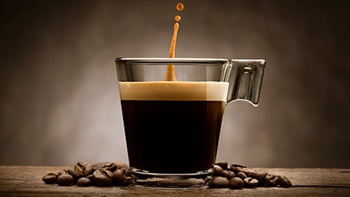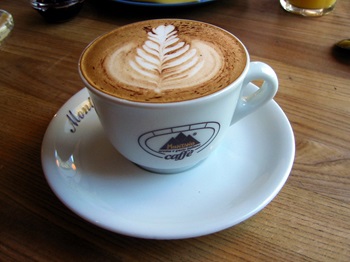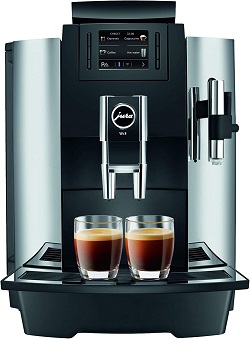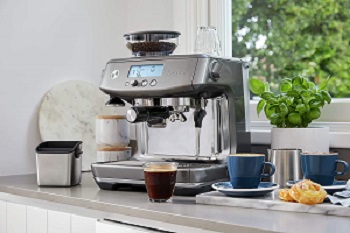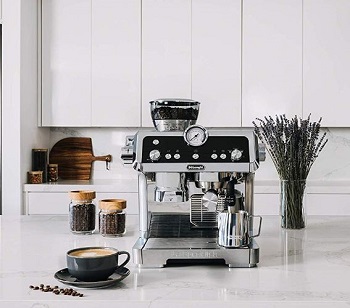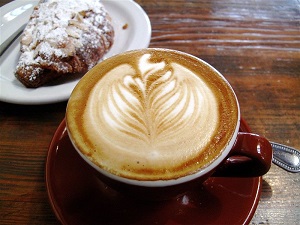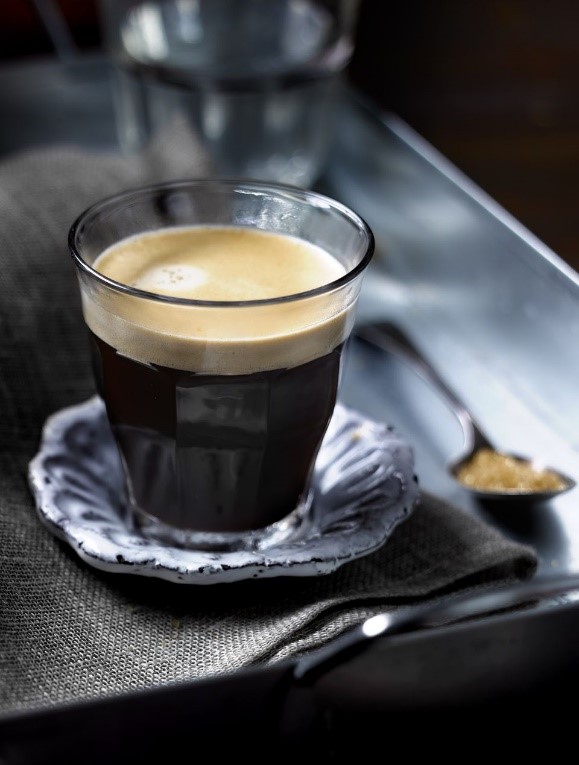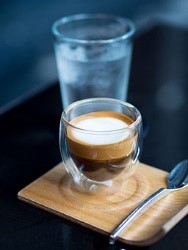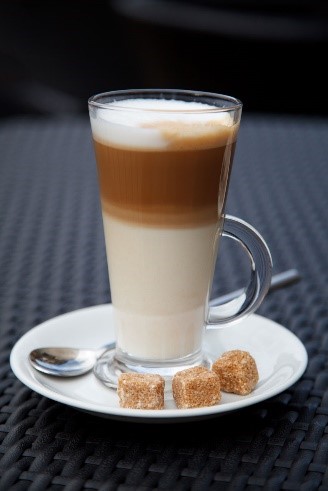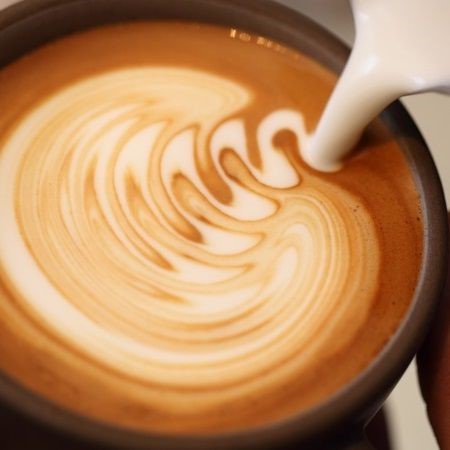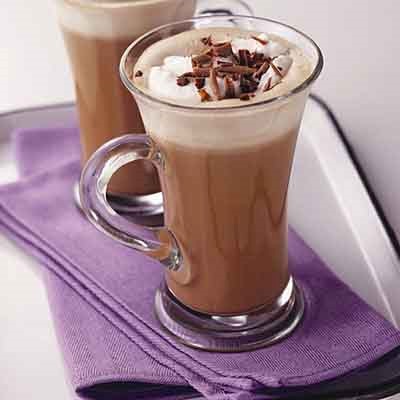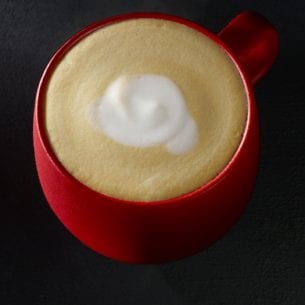Both steamed milk and frothed milk are types of milk that have been heated and aerated with steam, but they have different textures and uses. Steamed milk is smooth and silky, with tiny bubbles that are barely visible. Frothed milk is light and airy, with large bubbles that create thick foam.
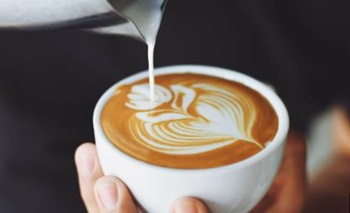
The difference depends on how much air is introduced into the milk during the steaming process. The more air, the more froth.
Steamed milk and frothed milk are not interchangeable. Here we explain the differences, how to make them, and typical expresso-based drinks using steamed and/or frothed milk.
What is steamed milk?
Steamed milk is milk that has been heated using steam, typically from an espresso machine’s steam wand.
During the steaming process, the milk’s temperature is raised, and a small amount of air is incorporated, resulting in a smooth and creamy texture.
Steamed milk is commonly used in beverages like lattes and cappuccinos.
You might also like to read: our recent review on the best cappuccino machines.
What is frothed milk?
Frothed milk is milk that has been aerated and heated using steam, often from an espresso machine’s steam wand.
Unlike steamed milk, frothing involves introducing a larger amount of air into the milk, creating a light and airy texture with a layer of foam on top.
Frothed milk is popular in beverages like cappuccinos and macchiatos.

Characteristics and uses of steamed vs frothed milk
| Steamed Milk | Frothed Milk |
| Less air, less foam | More air, more foam |
| Small bubbles, microfoam | Large bubbles, macrofoam |
| Smooth and silky texture | Fluffy and airy texture |
| Used for lattes, cappuccinos, mochas, etc. | Used for macchiatos, flat whites, iced cappuccinos, etc. |
How can I make steamed/frothed milk without a steam wand?
If you don’t have an espresso machine with a steam wand, you can still make steamed or frothed milk at home.
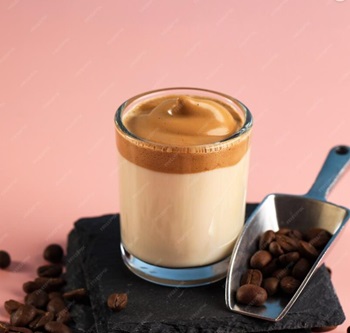
Making steamed milk at home without an espresso machine’s steam wand can be done using alternative methods. Here’s a simple way to make steamed milk on the stovetop:
Ingredients and Tools:
- Milk
- Saucepan
- Whisk or frother
- Thermometer (optional)
Steps: how to steam milk at home, froth milk at home
- Pour Milk: Pour the desired amount of milk into a saucepan. Use cold milk for better frothing.
- Heat Milk: Heat the milk over medium heat. Stir it gently to prevent scalding.
- Monitor Temperature: If you have a thermometer, monitor the milk’s temperature. Steamed milk is typically heated to around 150-160°F (65-71°C).
- Froth the Milk: As the milk heats, use a whisk or a handheld milk frother to froth the milk. Hold the whisk at a slight angle to incorporate some air.
- Continue Frothing: Continue whisking or frothing until the milk reaches your desired level of frothiness. Be careful not to let it boil.
- Remove from Heat: Once the milk is heated and frothed, remove it from the heat.
- Pour and Serve: Pour the steamed and frothed milk into your coffee or espresso. You can spoon the foam on top for a latte or mix it in for a creamier texture.
Top 3 espresso machines to make steamed milk and frothed milk at home
Here are our Top 3 espresso machines with a built-in steam wand that you can use to make steamed milk and frothed milk at home.
1. Breville Barista Express:
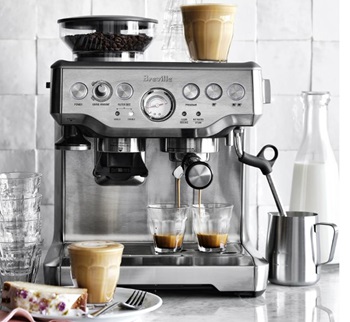
View Breville Barista Express on Amazon.com
- Features a built-in conical burr grinder for fresh coffee grounds.
- Steam wand for frothing milk with adjustable temperature control.
- User-friendly interface with programmable shot volumes.
You might also like to read: our review on the Breville Barista Express Espresso Machine.
2. Gaggia Classic Pro:
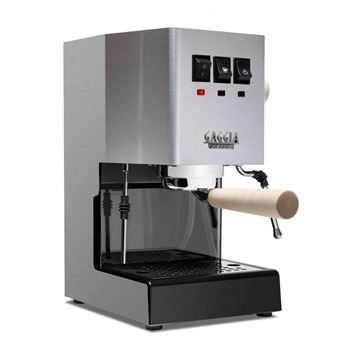
View Gaggia Classic Pro on Amazon.com
- Known for its durability and classic design.
- Powerful steam wand for creating microfoam for lattes and cappuccinos.
- Comes with a 3-way solenoid valve for easy clean-up.
You might also like to read: our in-depth review on the Best Gaggia Espresso Machine Models .
3. De’Longhi Dedica EC685:
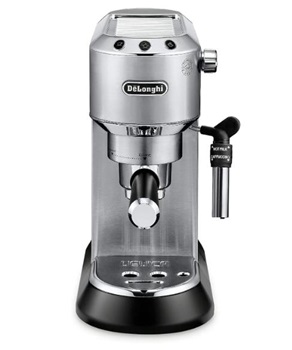
View De’Longhi Dedica Deluxe on Amazon.com
- Compact and sleek design, suitable for small spaces.
- Manual frother for creamy frothed milk.
- Adjustable cappuccino system for various milk drinks.
You might also like to read: our in-depth comparison of the best De’Longhi Espresso Machines.
Summary: steamed milk vs. frothed milk
The main difference between steamed milk and frothed milk lies in the texture and consistency of the milk foam.
Steamed Milk:
- Steamed milk is created by introducing hot steam into milk.
- The steam heats the milk and creates a velvety, creamy texture.
- Steamed milk has a smoother and silkier consistency, with minimal foam.
Frothed Milk:
- Frothed milk involves creating a layer of foam on top of the milk.
- This is typically achieved by introducing air into the milk using a steam wand.
- Frothed milk has a thicker, airy texture with a noticeable layer of foam on the surface.
In summary, steamed milk is characterized by its creamy and smooth texture, while frothed milk has a thicker, foamier consistency.
Both types of milk are commonly used in espresso-based drinks like lattes and cappuccinos, each contributing to the overall flavor and mouthfeel of the beverage. The choice between steamed and frothed milk depends on personal preference and the specific requirements of the desired coffee drink.
FAQ’s
Q1: How is steamed milk different from frothed milk?
Steamed milk and frothed milk are both created by introducing steam into milk, but they differ in the amount of air incorporated and, consequently, in texture. Frothed milk incorporates much more air in the frothing process than does simple steaming.
Q2: Is steamed milk just hot milk?
While steamed milk is indeed hot, the term typically refers to milk that has been heated and aerated using steam, often from an espresso machine’s steam wand. The process involves introducing a controlled amount of steam into the milk, which not only heats it but also creates a certain level of foam and a smooth, creamy texture.
So, while steamed milk is hot, it’s not just about the temperature, it’s about the specific process of using steam to heat and texture the milk.
Q3: Does frothed milk taste sweeter than steamed milk?
The sweetness of frothed milk versus steamed milk is not inherently different based on the texturing process. Both frothed and steamed milk come from the same base ingredient—milk—and any perceived difference in sweetness is likely due to factors such as the overall texture, temperature, and personal preference.
However, the texture of the milk can influence how it interacts with the flavors in a beverage. Frothed milk, with its lighter and airier texture, might provide a different mouthfeel, and this could potentially affect the perception of sweetness. The foam in frothed milk might trap some of the aromas, making the overall flavor experience distinct from steamed milk.
You might also like to read: Tips for brewing a perfect cup of espresso at home.
